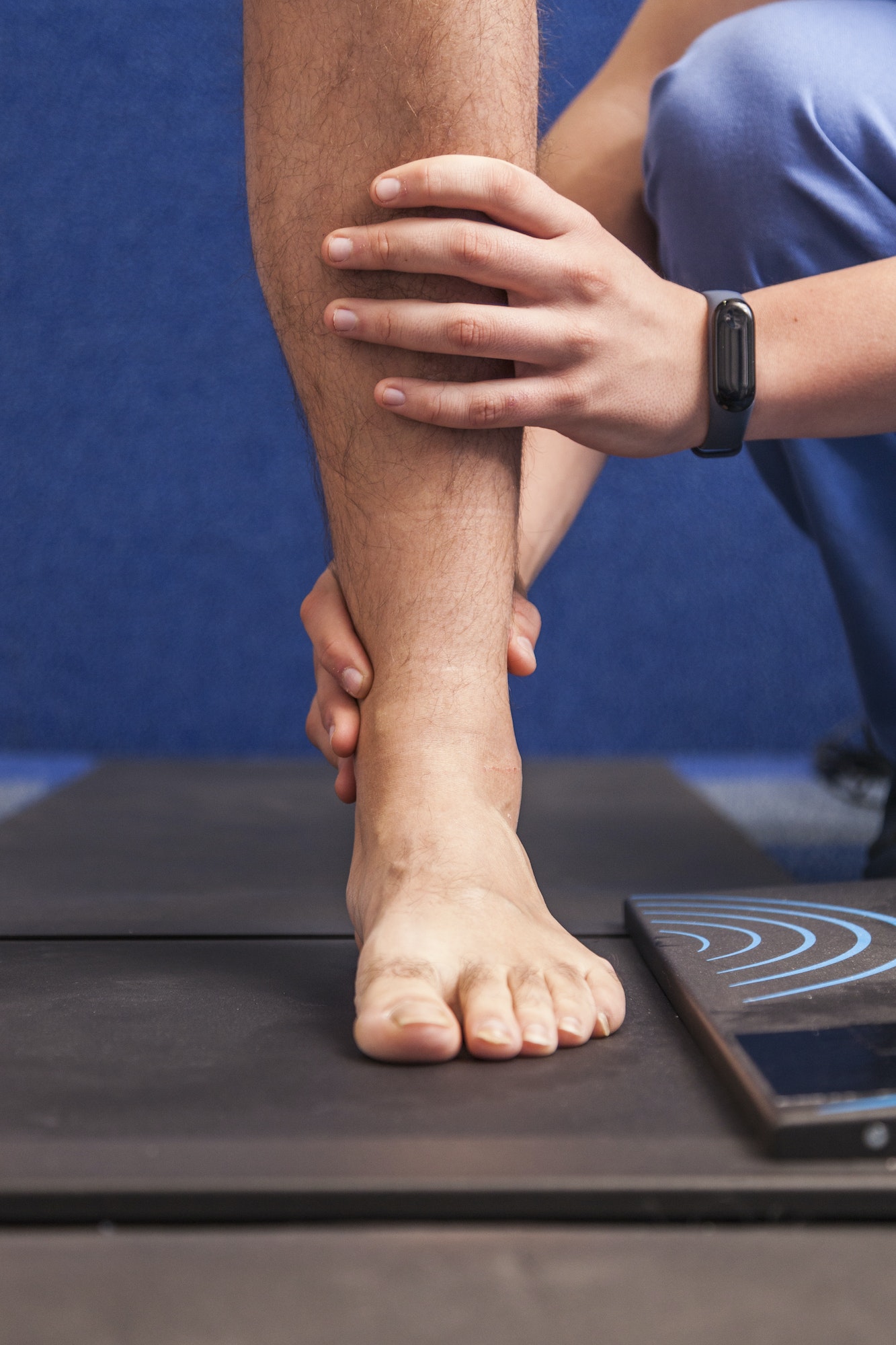Table of Contents
Have a Sports Injury to your foot or ankle? we can help!
Athletes are prime candidates for foot and ankle injuries simply because most exercises and sports keep their players up on their feet, resulting in stress and overuse for their lower extremities. Add in some jumps and lateral movements side-to-side, and athletes’ feet have to work even harder to stay stabilized. A missed step, a fall, or a twist of the ankle can bench any athlete.
As board-certified podiatrists, it’s our job to get you back on your feet and back in the game as soon as possible. We have ample experience and training in the examination, diagnosis, and treatment of any condition that affects the foot, ankle, or lower leg, and are well equipped to handle common or complex sport injuries.
So whether you run 5Ks or play pickleball, baseball, soccer, football, volleyball, basketball, tennis, or any other sport, we can help!
Common causes of sports injuries
Every sport comes with a risk of injury. The more intense the sport, the higher the chance of sustaining a more severe injury. Some common causes of sport-related injuries include:
- Not stretching before exercising
- Not wearing proper shoes to provide shock absorption, proper cushioning, or stability
- Excessive training or overuse
- Being on uneven surfaces, such as in running or hiking
- Sliding into home plate or sliding to avoid a tackle
- Twisting your ankle while running, kicking or fielding balls, or reaching out to hit a ball like in tennis or pickleball
- Running side-to-side frequently, as is needed in basketball, field hockey, football, soccer, tennis, or pickleball
- High impact movements, such as tackling in football
How Do I Know If I Need To See A Podiatrist?
Chances are, if it’s a severe enough injury, you already know you need to see a doctor. But for minor injuries, it’s not always clear if you should just stay home, rest, and put ice on it.
In order to make sure a seemingly minor injury doesn’t get worse, it is highly advisable that you see a board-certified podiatrist if you experience any of the following symptoms:
- Pain or difficulty bearing weight
- Swelling
- Moderate or severe bruising on a lower extremity
- Feeling weakness in the foot, ankle, or leg – for example, the sensation that it may give out
- Decreased range of motion
Common Sports-Related Injuries
Ankle Sprains
Ankle sprains are one of the most common sports injuries, as a result of the ligaments around the ankle being over-stretched or torn. Prompt evaluation and treatment by one of our board-certified podiatrists is important to ensure prompt, proper healing, and the prevention of chronic instability. Physical therapy, which many of our offices offer, is an important component to healing an ankle sprain. An ankle that has not been properly healed and strengthened is more likely to suffer repeated sprains, leading to chronic ankle instability.
Sometimes what is thought to be a “sprain” is actually a fracture, which requires different treatments and has various healing times. A fracture is a gap(s) in the bone, making it hard to withstand weight. When swelling and pain occur, seeing a podiatrist for an evaluation can prevent a disabling injury. Your board-certified podiatrist can determine which injury you have to ensure the proper treatment plan is implemented.
Turf Toe
Treatment
For many minor ankle and foot injuries, rest, rehabilitation, and strengthening exercises are sufficient treatment. However, more severe injuries may require more aggressive strategies such as laser therapy or surgery. Your board-certified podiatrist may perform a variety of orthopedic tests and assessments to diagnose your sport injury, including X-rays or an MRI if needed.
Depending on the sports you do and the shape of your foot, on of our board-certified podiatrists might also recommend custom orthotics. During activity, the arch of the foot goes up and down to absorb shock, and the arch begins to collapse with age. Custom orthotics support your arch, restore normal foot function, and relieve foot or ankle pain. Custom orthotics are particularly helpful for anyone struggling with their Achilles tendon, as these individualized shoe inserts can help control foot function and elevate the heel to place slack in the tendon. All of our orthotics are electronically scanned images or physical impressions of your foot to ensure accuracy for your foot needs.
Once we have determined your specific injury, severity, and personal medical history, your board-certified podiatrist will be able to prescribe a course of treatment best suited to your needs.
Injury Prevention
Stretching
Proper Shoes
Once you’re back on your feet, your board-certified podiatrist can talk to you about the best shoes for your sport. There is no shoe that is one-size-fits-all-sports, so don’t try. A proper shoe (or cleat, depending on the sport) will not only best support your feet while you’re active, it will also reduce your risk of injury.
Athletes who wear shoes that are worn out or not designed for the sport in which they’re participating can suffer from:
- Plantar Fasciitis, an inflammation of the band of tissue that extends from the bottom of the heel to the toes
- Neuromas, pinched nerves in the foot that may cause severe pain and numbness of the inner toes
- Stress fractures, injuries that cause gap(s) in the bone making it hard or impossible to withstand weight
- And more!
Up Your Game With A Board-Certified Podiatrist
Sports medicine isn’t just about surgery and repairing sports-related injuries, it is also about injury prevention. To be the best at your game, we recommend being evaluated by one of our board-certified podiatrists annually. They can not only give tips for faster recovery, they can recommend improvements to your foot care routine, including useful tools like orthotics.
Make an appointment today to get you back in the game!

Meet Weil Foot & Ankle Institute
By: Weil Foot & Ankle Institute, Published: May 20th, 2022
Review By: Lowell Weil Jr., DPM – Jan 19th, 2023


